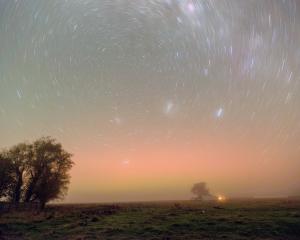
"Most people look at a mountain and think of it as a massive piece of rock that is static and strong, with an incredible presence that will last.
"I don’t think we fully comprehend how active New Zealand’s mountain landscape really is," Simon Cox, a structural geologist at GNS Science’s Dunedin office, says.
"Our rates of erosion, rock avalanches and landslides are second to none in the world. We are right up there. We also have regular larger earthquakes. But we only see these things happen sporadically."
Cox, one of the speakers at the Sustainable Summits Conference, which begins at Aoraki/Mt Cook tomorrow, will highlight some of the hazards that exist in our alpine zones.
"It will be based around getting people to think that landscapes aren’t static, and that New Zealand is one of the fastest evolving, most active landscapes anywhere on the planet."
Cox says New Zealand is fortunate that much of its alpine landscape is within national parks, "because that means we don’t have large numbers of the population trying to live among the mountains".
His point: mountains are inherently dangerous.
"You are either going to have things falling down on you or falling away from under you.
"We need to look at how we utilise that landscape. How we manage tourism developments. How we apply our understanding to national parks and approaches for conservation.
"As soon as you move or change ice and/or water, you tend to promote collapse. That could be on top of or under huts, so we need to mitigate hazards by placing structures carefully."
A recipient of the McKay Hammer Award from the New Zealand Geoscience Society, Cox’s work has included geological mapping of the Southern Alps and southern Victoria Land, Antarctica.
"In the last 50 years, as the notion of plate tectonics has become accepted as the way in which mountains are formed, our understanding has developed.
"From the 1990s there was a major change as we began to use GPS to measure the rates at which plate motions occur and the land deforms.
"We expect, on the basis of long-term records, that the alpine fault would release about every 260-400 years (or 330 +/68 years). The last earthquake is thought to have been around 1717. This means there is [about] 30% likelihood for a major earthquake in the next 50 years.
"On that time frame,we don’t completely know whether that builds the mountains, lifting land along the fault line, or if the shaking reduces the mountains by knocking them down.
"In between, the weather causes steady erosion. There are also natural triggers that occur without earthquakes, such as the 2014 rock avalanche from Hillary Ridge, Aoraki/Mt Cook. All these processes are part of the evolution of topography.
"Any slope that is over 65 degrees isn’t strong enough to remain that way for long periods."
Between any earthquake events, our mountains are also being lifted by what Cox describes as "elastically absorbing plate tectonic strain."
In short, they are growing about 5mm a year.
"But we don’t know how much of that growth is released in an earthquake, or will stay."













